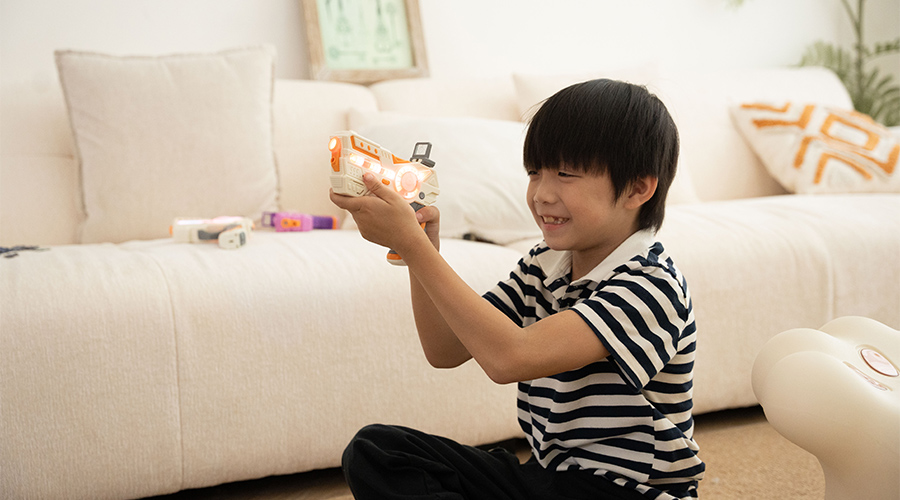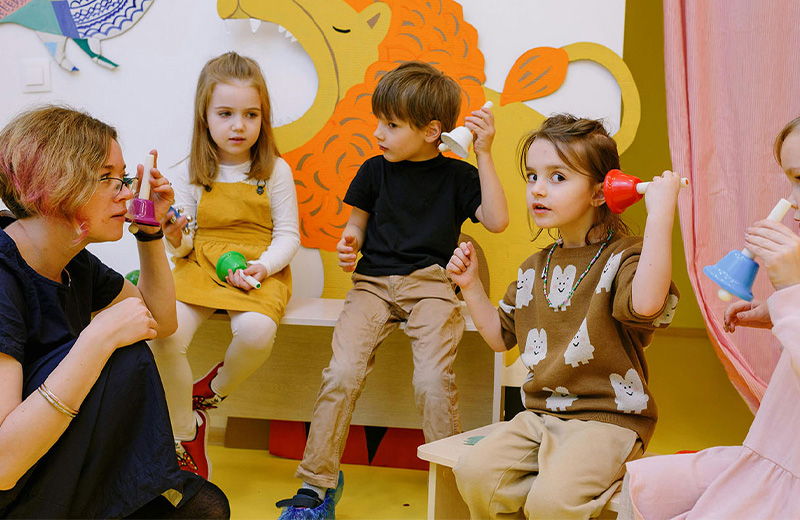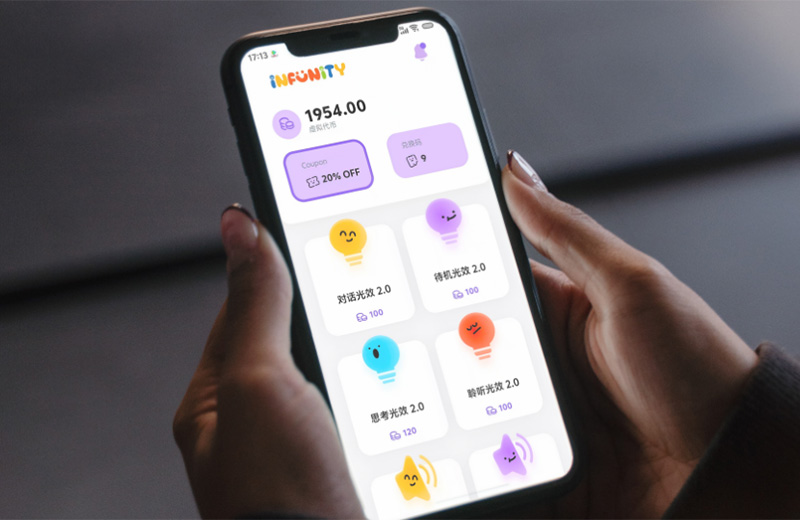With more than two decades of experience, the family-owned company founded itself in 2025 and set out with a simple mission: to connect fun with learning. The Pulse V-1 reflects that vision by addressing three critical pillars parents care most about—learning, bonding, and security.
Learning Beyond Play
Children between three and eight are in a golden stage for language and cognitive growth. INFUNITY designed the Pulse V-1 not just as a toy, but as a learning device camouflaged with entertainment.
The toy’s built-in camera and AI recognition system allow kids to scan objects around them. When a child points the device at a vase or a fruit, the onboard AI doesn’t just identify it; it tells a short story, explains a science fact, or switches into another language to expand vocabulary. This transforms playtime into a low-pressure classroom, where curiosity drives discovery.
Unlike other AI toys that rely on premade content, the Pulse V-1 comes with a self-developed story library that unfolds in chapters, avoiding boring repetitive tales. The toy can also be linked to an app that offers daily tasks and achievements, turning the process of learning into a disciplined gaming process. Parents receive weekly usage reports, giving them insight into what their children are curious about, be it animals, colors, or new words.
After a generation that has learned through screens, INFUNITY expects that hands-on, interactive learning through AI will be more effective, because it keeps kids physically engaged while exploring knowledge.
Bonding Through Technology
One of the most common criticisms against smart toys is that they isolate children from family activities. INFUNITY’s engineers tried to reverse that trend by emphasizing bonding features in the Pulse V-1.
The AI inside isn’t just reactive—it can initiate conversations, avoiding gaps and silences that discourage children from continuing usage. By remembering past interactions, the toy builds continuity, creating a sense of companionship. It might recall a child’s favorite animal from last week’s play session, or pick up a story arc where it last left off.
Meanwhile, the companion app acts as a bridge between parents and children. Parents can customize sound effects or set daily missions for the toy, turning it into a shared project. They can also track progress and use the insights for dinner table conversations. Instead of replacing parental involvement, the device is designed to spark dialogue—about what the child scanned, learned, or achieved that day.
INFUNITY is betting that this two-way flow of engagement will help address parents’ concerns about AI-driven isolation. By designing the toy as a family-friendly AI partner rather than a substitute caretaker, the company positions itself in a unique position in the AI toy market.
Safety is not Negotiable
Toy safety remains the biggest barrier for AI adoption. Parents are wary not only of physical hazards but also of privacy and digital security. INFUNITY leveraged its 20 years of toy manufacturing know-how to mitigate these concerns.
On the physical side, the Pulse V-1 meets international toy safety standards. Its materials are non-toxic, and its structural design is robust enough to withstand rough play while preventing sharp edges or detachable parts that could pose risks. The RGB lighting system, while futuristic, is carefully calibrated to be safe for children’s eyes.

On the digital side, the company built closed-loop AI architecture. Data from object scans or voice interactions stays within the device and its encrypted app ecosystem. Unlike open-ended voice assistants, the Pulse V-1 does not expose children to uncontrolled internet content. Instead, all learning modules are curated and pre-tested.
By blending traditional safety protocols with modern digital safeguards, INFUNITY seeks to gain trust where parents may question whether AI toys are more risk than reward.
A Product at the Crossroads
The Pulse V-1 enters a market where the stakes are high. Analysts project that the global smart toy market could exceed $35 billion by 2027, but consumer skepticism is strong. Parents want reassurance that technology will add value, not complexity.
INFUNITY’s approach—designing toys that teach, connect, and protect—aims to answer those concerns. The company’s all-in-one production model, from R&D to after-sales service, gives it greater control over quality. It also allows rapid iteration if safety issues arise or educational content needs to be updated.
Ultimately, the Pulse V-1 represents more than a futuristic toy . It is a test case for whether AI toys can become a trusted partner in childhood development. If successful, it could help redefine what “AI toys” means in the digital age—less about distraction, and more about learning, bonding, and safe exploration.




 Recommended for You
Recommended for You
















